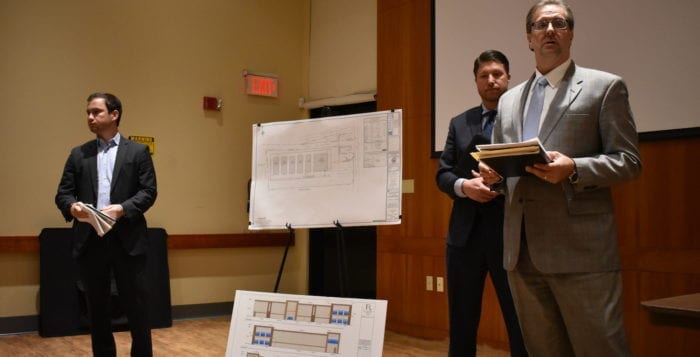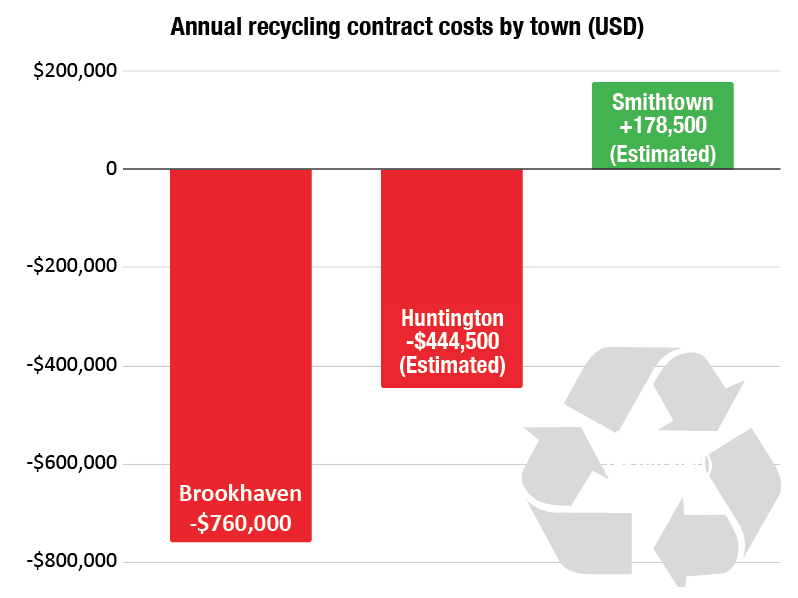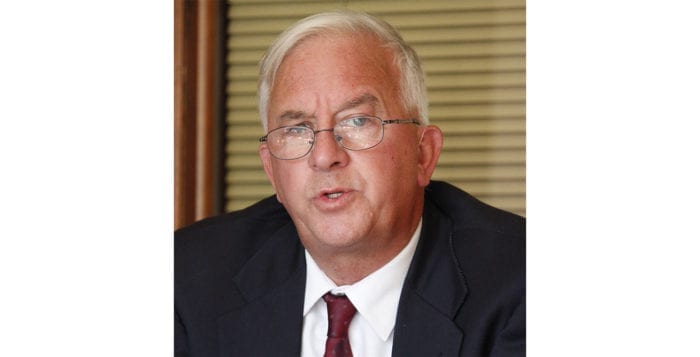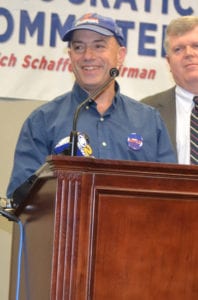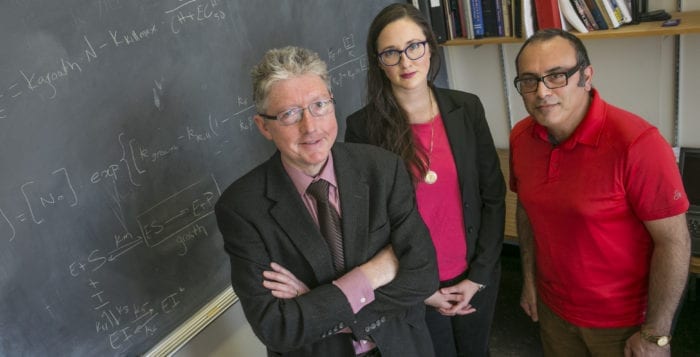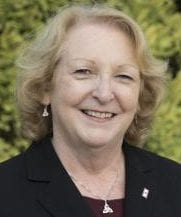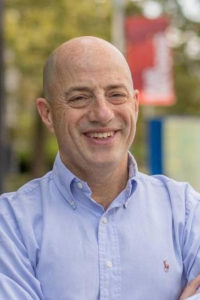There are two new developments on the horizon for Port Jefferson Station, tucked away in the backwoods along Sheep Pasture Road. Despite first assumptions, they’re not hotels, restaurants or homes, but self-storage facilities.
Beyond that, both projects could be located a three-minute drive from each other.
At its Jan. 31 meeting, the Town of Brookhaven board voted unanimously to change the zoning on a parcel located along Sheep Pasture Road, across from the Greek Orthodox Church of the Assumption from B1 Residential to L1 Industrial for the purpose of creating the 87,550-square-foot self-storage facility on the nearly five-acre wooded area.

“We make our best efforts to balance all of the competing interests and factors and make decisions that take into consideration all concerns.” Brookhaven Councilwoman Valerie Cartright (D-Port Jefferson Station) said.
Enrico Scarda, founder of The Crest Group, a real estate firm based in Hauppauge that owns the property, said he expects to start building the structure within the next eight months.
“We had huge community outreach, both to the immediate residents and others, we couldn’t really do anything better than this proposal,” Scarda said.
The development was initially proposed in 2018, but complaints about the structure being close to the road along with its large amount of parking spaces and its industrial-seeming facade made the company and town go back to the drawing board.
Anthony Graves, the town’s chief environmental analyst, presented designs of the new structure that included an updated rustic facade, a limitation of 35 feet in height and 75 feet of natural buffering between Sheep Pasture Road, Dark Hollow Road and the structure. This pushes the facility back to the northern end of the property, near the LIRR train tracks. The site allows for 44 parking spaces and 41 spaces for the storage of vehicles. Graves and Crest Group’s attorneys said they promised to include solar panels on the roof and have the entrance onto the property come directly across from Harborview Avenue.
“The safest thing to do is not have people living on the site,” Graves said.
The town said they have received letters of approval from the Three Village Civic Association as well as the Greek Orthodox Church of the Assumption.
A number of residents spoke at the meeting, and while some spoke up in favor of the proposal, complementing its setback away from the road and for the convenience it could give some residents and businesses, others spoke their opposition to the development.
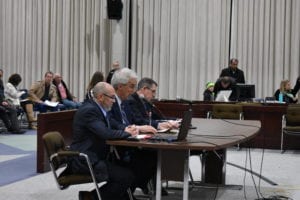
“The value of my house is definitely going down because of this thing,” Port Jeff Station resident Richard Rowland said. His property was described as a “stone’s throw” away from the planned storage facility.
Cartright said the town worked hard to account for resident’s complaints.
“Every change that was made to the project was in response to a request or concern raised by constituents,” the councilwoman said.
The Crest Group president said they went ahead with this development instead of homes because of the unique nature of the property. In 2015 the town restricted development at the site as it was once owned by Lawrence Aviation Industries, which dumped harmful chemicals onto the property for years that then leached into the soil and groundwater. The U.S. Environmental Protection Agency and the New York State Department of Environmental Conservation, along with the Town of Brookhaven, have been working on cleanup efforts. In the meantime, the town promised to restrict certain industrial and residential developments.
Brookhaven Supervisor Ed Romaine (R) said self-storage facilities, at least compared to overall development, has relatively little impact in terms of cars, traffic or the environment.
“It’s the least impactful on traffic,” the supervisor said.
Port Jeff Station resident Jim Fox contested the idea the old Lawrence Aviation property is unavailable for single-family residences
development in the near future.
“The EPA has said there has been a significant reduction in the plume,” Fox said. “It’s going to be 100 percent drinkable in 10 years.”
Baylis Avenue self-storage
Another self-storage structure has been proposed to the Port Jefferson Station/Terryville Civic Association, one with a much smaller footprint than the one down the road.
This project, which would be located at 16 Baylis Ave., is currently a small set of undeveloped woods and an empty field zoned L1 Industrial sitting next to a pocket of residential homes and apartments.
Designs presented to the civic by Atlanta, Georgia-based developer Talon Inc., show six storage units spaced 30 feet apart, with five being one story and the last being a two-story storage space. Each single-story unit takes up 7,750 square feet and is accessed from the exterior while the two-story has a footprint of 40,500 square feet and will contain an office space as well.
Charlie McAteer, the civic’s corresponding secretary, said the developers had already talked to the civic and Brookhaven town in summer 2018, but that no moves were made before the Jan. 22 meeting.

Keith Brown, a zoning attorney from Melville-based Brown & Altman LLP, said they chose the site because of its current zoning, its proximity to the railroad tracks, and the wooded buffer between it and the neighboring Heatherwood House at Port Jefferson apartment complex.
“The site is designed with a 76-feet-deep, contiguous, naturally wooded buffer that will serve as a buffer to the south and a 214-feet buffer to the north, and 48 percent of the site will be landscaped.”
Designs shown at the civic meeting indicate 53 parking spots with another four stalls designated for loading. The road leading up to the facility is currently pockmarked with potholes, and the property at the end of Baylis currently features a small-scale lumber operation.
Brett Hatcher, senior vice president of investments at Columbus, Ohio-based real estate company Marcus & Millichap, who is working with Talon on the project, said they were already aware of the other self-storage site down the road, but wouldn’t comment on if that facility has changed their plans.
When asked, Scarda said he was unaware of the proposal for Baylis Avenue.
In a letter to the town, the civic relayed its appreciation for the 76-foot buffer and had no other comments on the property.

